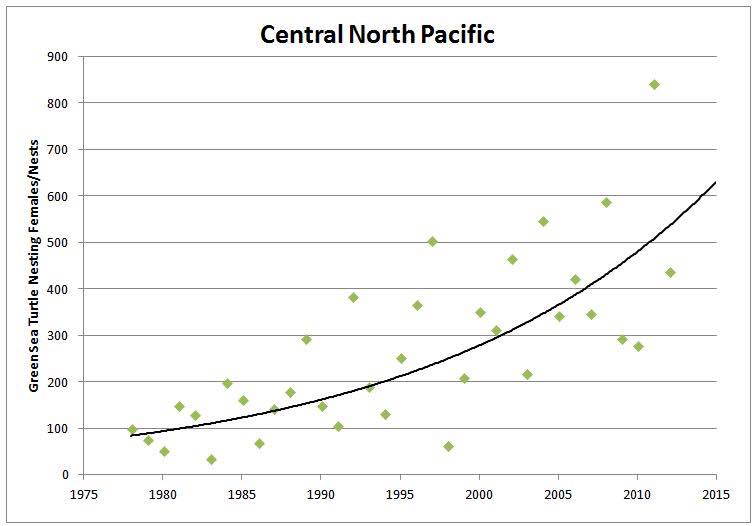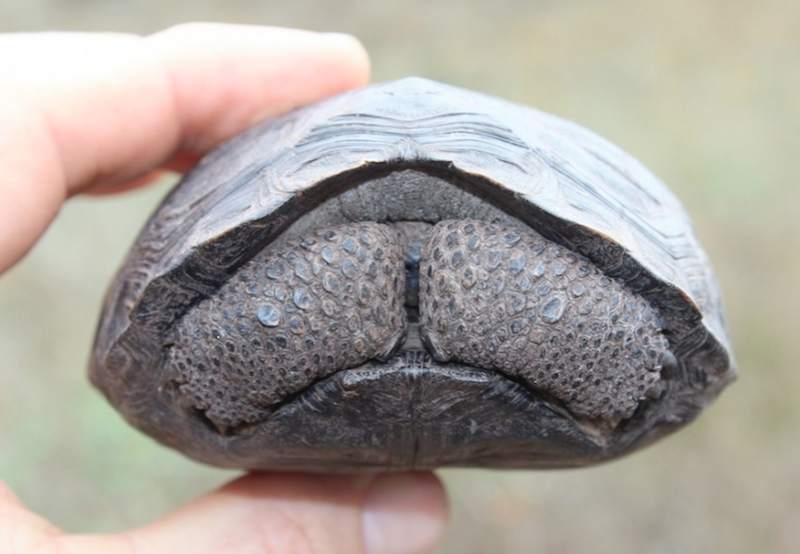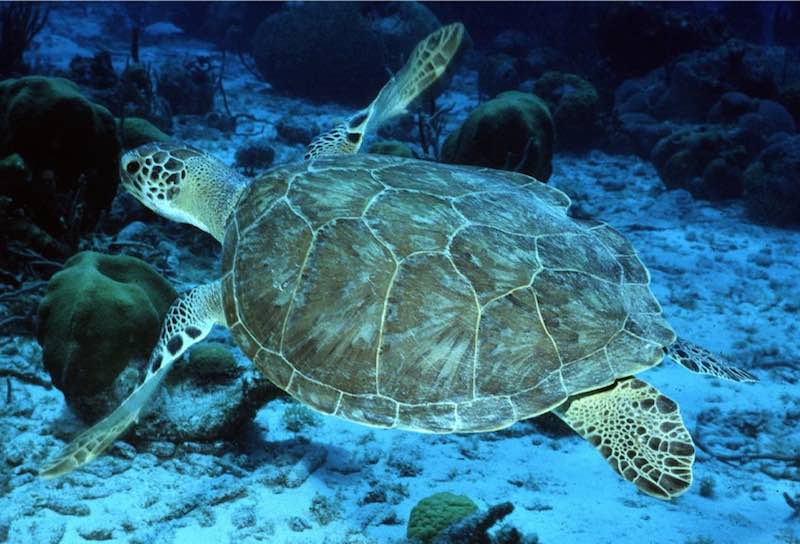Years of coordinated conservation efforts have paid off for the green sea turtle populations in Florida and the Pacific coast of Mexico. The Fish and Wildlife Service announced the good news that the turtle species has fared so well they will no longer be considered an endangered species.
There are now 2,250 nesting females in Florida alone, up from just a handful in 1978. The graph below shows the increase along the Pacific coast.
Officials have reclassified the status of those two breeding populations as threatened, rather than endangered, and credits stronger protection of nesting beaches, reduction of bycatch by fishing fleets, and prohibitions on the direct harvest of sea turtles, for the surge in numbers.
RELATED: Manatee Population Has Rebounded 500 Percent, No Longer Endangered
“The knowledge that green sea turtles can overcome illegal harvest, plastic pollution and warming waters testifies to their resilience,” said Catherine Kilduff of the Center for Biological Diversity, a conservation group.

In partnership with the National Oceanic and Atmospheric Administration (NOAA) Fisheries, the federal agency also announced they would be dividing the world-traveling turtles into 11 distinct population segments globally, to allow for tailored conservation approaches for each population, while maintaining federal protections for all turtles.
“While threats remain for green sea turtles globally, the reclassification of green sea turtles in Florida and Mexico shows how the Endangered Species Act-inspired partnerships between the federal agencies, states, NGOs and even countries is making a real difference for some of our planet’s most imperiled species,” said Fish and Wildlife Service director Dan Ashe.
A motion to lift the green sea turtles’ endangered status was proposed last year and reviewed after public comment. (Photo credit: NOAA)
Baby Tortoises Survive on Galapagos Island for First Time in 100 Years





















